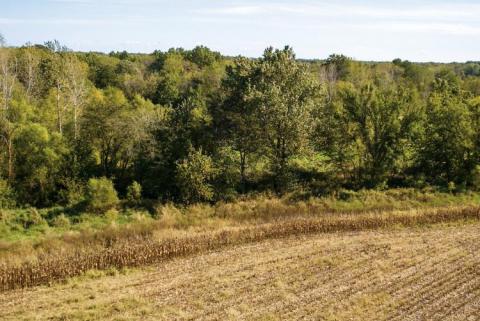Edge is the transition zone between habitat types. This zone offers critical wildlife food and cover. The amount, diversity, and quality of the edge directly affect wildlife populations.
High-quality edge is a wide band of plants that:
- Changes gradually from one cover type to another
- Has grasses, weeds, shrubs, vines, and small trees that provide food for wildlife (such as berries, seeds, browse, and insects)
- Offers cover for nesting and protection from weather and predators
Good edge usually requires deliberate action on the part of the landowner. Create high-quality woodland edge with following options:
- Plant shrubs or small trees in a 30-foot or wider strip at the edge of the field
- Use a management practice called edge feathering
- Allow the border to revert naturally to native plants and supplementing with other plants if necessary (The natural process usually is rapid and reliable after excluding grazing, plowing, and mowing.)
- Convert heavy sod, such as fescue, to edge habitat by plowing, disking, or applying herbicide to the border strip, which allows native species to propagate
On Agricultural Land
Some crop field acreage is considered too valuable to remove from production. An alternative in such areas is to create edge in the woodland by removing additional trees within 30–50 feet from the field border.
If trees border a field and affect crop growth, you may find it cost-efficient to let an edge develop between the trees and the field because the return from low-yield field edges often does not offset the cost of seed, fertilizer, and site preparation.
On Woodland Acreage
Large woodland tracts can lack the variety of plants necessary to support diverse wildlife populations. A 1-acre opening in a forest often provides as much as 10 times the amount of plants used by wildlife as 1 acre of mature timber. Annual weeds, grasses, and seedlings found in these openings produce food, nesting sites, and escape cover for wildlife.
Five to 10 acres of small clearings per 100 acres of woods is desirable. These openings should range from 1–3 acres in size. Smaller woodlands surrounded by pastures and farm fields will reduce the need for forest openings. Roads, utility rights-of-way, log landings, or small clear-cuts provide open space on larger woodlands.






















